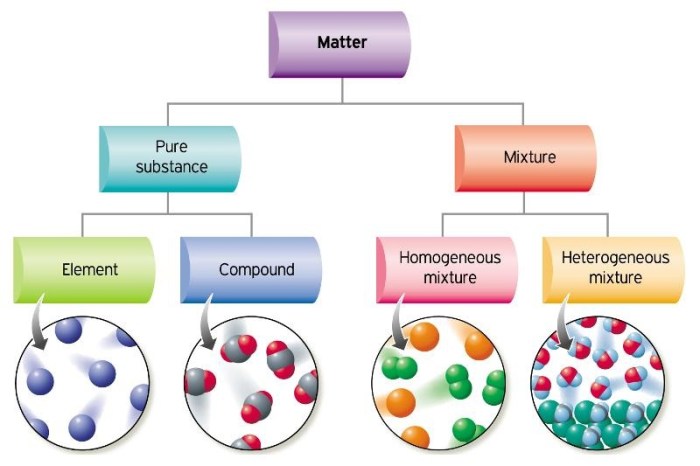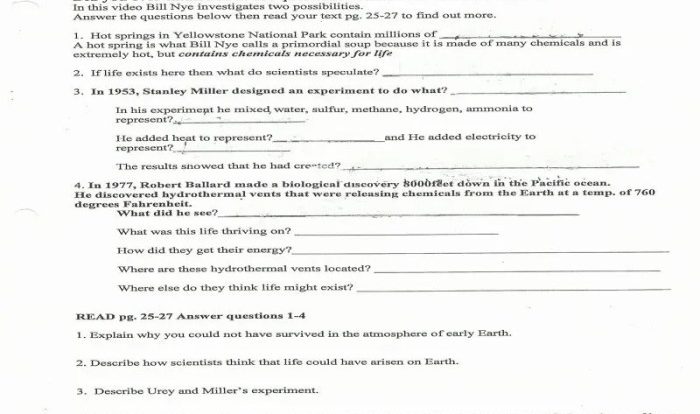Classifying matter mixtures and pure substances worksheet answers – Embark on an enlightening journey into the realm of matter classification with our comprehensive worksheet answers. Delving into the intricacies of mixtures and pure substances, we unravel their defining characteristics, explore methods for their identification, and uncover their indispensable applications across scientific disciplines.
As we delve deeper into the topic, we will uncover the fundamental distinctions between mixtures and pure substances, shedding light on their unique properties and behaviors. Our structured table provides a valuable resource, categorizing mixtures and pure substances with detailed explanations and justifications.
Classifying Matter Mixtures and Pure Substances: Classifying Matter Mixtures And Pure Substances Worksheet Answers

Matter, the physical material that constitutes the universe, can be classified into two broad categories: mixtures and pure substances. Understanding the distinction between these two types of matter is crucial in various scientific disciplines.
A mixture is a combination of two or more chemical substances that are not chemically bonded. The components of a mixture retain their individual chemical identities and can be separated by physical means, such as filtration or distillation.
Pure substances, on the other hand, are composed of only one type of atom or molecule. They cannot be broken down into simpler substances by chemical means. Pure substances can be further classified into elements and compounds.
Worksheet Answers
| Mixture Type | Pure Substance Type | Examples |
|---|---|---|
| Homogeneous | Element | Air, saltwater, alloy |
| Heterogeneous | Compound | Sand in water, oil in water, granite |
Justifications:
- Air, saltwater, and alloy are homogeneous mixtures because their components are evenly distributed throughout the mixture.
- Sand in water, oil in water, and granite are heterogeneous mixtures because their components are not evenly distributed.
- Air is an element because it is composed of only one type of atom (hydrogen and oxygen).
- Saltwater is a compound because it is composed of two different types of atoms (sodium and chlorine) that are chemically bonded.
- Alloy is a compound because it is composed of two or more different types of atoms that are chemically bonded.
Mixture Classification Methods, Classifying matter mixtures and pure substances worksheet answers
Mixtures can be classified using various methods, each with its advantages and limitations:
- Physical separation: This method involves using physical means, such as filtration, distillation, or chromatography, to separate the components of a mixture based on their physical properties, such as size, density, or solubility.
- Chemical analysis: This method involves using chemical reactions to identify and quantify the components of a mixture. For example, titration can be used to determine the concentration of an acid or base in a solution.
- Chromatography: This method involves separating the components of a mixture based on their different rates of movement through a stationary phase. Chromatography can be used to identify and quantify the components of a mixture, as well as to separate them for further analysis.
Pure Substance Identification
Pure substances can be identified using various techniques, including:
- Melting point determination: This method involves measuring the temperature at which a solid substance melts. Pure substances have a sharp melting point, while mixtures have a range of melting points.
- Boiling point determination: This method involves measuring the temperature at which a liquid substance boils. Pure substances have a sharp boiling point, while mixtures have a range of boiling points.
- Spectroscopy: This method involves analyzing the light emitted or absorbed by a substance. Pure substances have characteristic spectra, which can be used to identify them.
Applications of Classification
Classifying matter is essential in various fields, including:
- Chemistry: Classifying matter helps chemists understand the composition and properties of substances, design new materials, and develop new chemical reactions.
- Environmental science: Classifying matter helps environmental scientists understand the composition and behavior of pollutants, design methods for pollution control, and assess the environmental impact of human activities.
- Materials science: Classifying matter helps materials scientists design and develop new materials with specific properties for use in various applications, such as electronics, aerospace, and medicine.
Helpful Answers
What is the primary distinction between mixtures and pure substances?
Mixtures are combinations of two or more substances that retain their individual identities, while pure substances are composed of a single type of molecule or atom.
How can we differentiate between homogeneous and heterogeneous mixtures?
Homogeneous mixtures exhibit uniform composition throughout, while heterogeneous mixtures display visible variations in composition.
What techniques are commonly employed to identify pure substances?
Melting point determination, boiling point determination, and spectroscopy are frequently used to establish the purity of substances.


